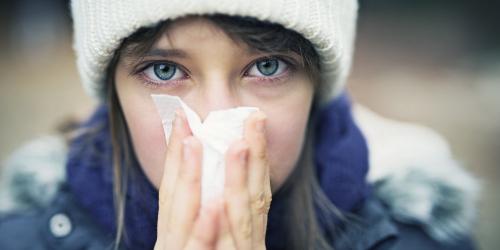Only one case listed in 1994, 5 cases in 2004, 19 cases in 2011, 22 cases in 2014 and already 18 cases since January 2016 ... The figures speak for themselves: although rare, the syndrome of toxic shock related to the rules (SCT) is rising.
This potentially life-threatening infection "occurs in rather young healthy patients who use vaginal protection (tampons and menstrual cups )," explain the infectiologists of Hospices Civils de Lyon. Blame it on a strain of Staphylococcus aureus bacterium that produces an aggressive toxin (TSST-1).
Tampons and menstrual cups: the possibility of a fulgurating infection
Many of us carry Golden Staphylococci at some point in our lives, on the skin, in the nose or vagina. Theoretically, our immune system protects us from their misdeeds: it makes antibodies that neutralize these toxins. But if our immunity is at half-mast or if the bacteria proliferate excessively, our natural defenses are outdated. Toxins cross the vaginal wall and spread throughout the body through the bloodstream.
Buffers and cups greatly increase this risk: by retaining blood inside the vagina, they provide an excellent culture medium for bacteria that multiply so abundant.
What are the symptoms of toxic shock?
The symptoms of the toxic shock often evoke an influenza or a gastroenteritis: high fever (beyond 38,9 ° C), muscular pains, headache, nausea, diarrhea ... with sometimes a cutaneous redness that looks like a sunburn . If in doubt, quickly remove your intra-vaginal hygiene protection and consult urgently.
In 2012, model Lauren Wasser had her leg amputated because she was not hospitalized in time.
A scientific study launched by the University Hospital of Lyon
Hard to know today the exact origin of the recrudescence of this syndrome. Is our immune system less valiant than it used to be? Has the composition of the pads changed? Do young women wear them too long?
To be sure, the Lyon researchers organized a collection of used tampons to study their contamination rate.
Results: the buffers would not promote the proliferation of the bacterium responsible for the toxic shock. They would even have a "neutral effect" on staphylococcus aureus.
In contrast, menstrual cups would not be as "healthy" alternatives as we thought. The latter would promote growth of staphylococcus and production of the toxin TSST-1. In question: their larger diameter, which causes an inflow of air, and therefore oxygen, more important.
For infectious diseases, the real problem is in fact the misuse of hygienic protection and a lack of information. A national survey **, conducted by the National Staphylococcal Center, is currently underway to improve the practices of users.
 Istock / matka_Wariatka.
Istock / matka_Wariatka.
Pesticides and other toxic products contained in the buffers involved?
An Argentinian study from the University of La Plata revealed that 85% of the buffers contain glyphosate, a component of the Roundup weed killer. The latter is considered by the International Agency for Research on Cancer (CIR) as a "probable carcinogen".
As farmers pour a plethora of weed killers into their fields, the cotton fibers in the buffers are soaked in them. "Exposure to this substance, even at low doses, can disrupt the hormonal balance ," says Professor Gilles-Éric Séralini from the University of Caen, specializing in the effects of pesticides on health.
Laboratory experiments have also shown that it induces long-term breast tumors , diseases of the liver and kidneys. "The adjuvants that glyphosate herbicides contain are even more toxic because they are detergents that facilitate absorption through the mucous membranes," adds Professor Séralini.
Perhaps they intervene in the spread of Staphylococci from the vagina to the whole body?
Unfortunately, glyphosate is not the only chemical finger pointing.
In a documentary directed by Audrey Gloaguen and broadcast by France 5 in April 2017, we can see Bernard Tailliez, independent scientific director, operate several analyzes on stamps of different brands. The latter then notes the presence of nearly thirty chemicals, including phthalates!
Privilege sanitary napkins and bio tampons
As long as light has not been made on tampons and cups, it is better to opt for sanitary napkins. Principle of precaution obliges. Indeed, these do not prevent the flow of menstrual flow and contain little cotton, so little glyphosate.
If you are refractory to towels, wear one at least at night because keeping an internal hygiene protection for more than 4 hours in a row is not reasonable. And if possible choose organic buffers, free of pesticides.
* According to Planetoscope
** cnr-staphylococci.univ-lyon1.fr/?id=2021394



